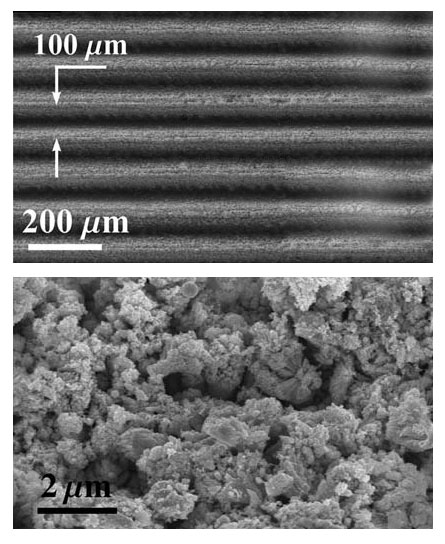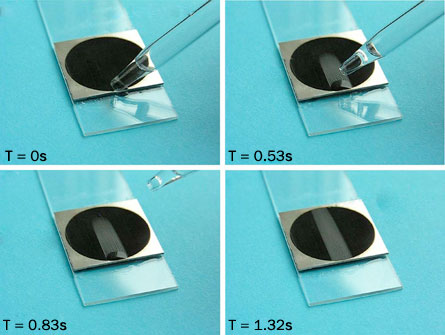- More than 2 years ago
If Sisyphus’ punishment involved dragging buckets of water uphill rather than rolling a boulder, science could have helped him out.


Researchers have used a femtosecond laser to etch tiny channels into metal plates, prompting liquid to flow uphill. The work could lead to devices that draw fluid across microchips or coolant through computers, report Chunlei Guo and his colleagues in the June 1 Applied Physics Letters.
The gold and platinum plates look smooth to the naked eye, but up close the surface is a ragged microterrain of nooks and protrusions. The fine grooves etched by the laser combined with the irregular microstructure results in superior capillary action.
In the new experiments, methanol flowed up a chip standing on edge at a speed of 1 centimeter per second, the highest speeds for a liquid moving “up” a metal, contend Guo and his colleague Anatoliy Vorobyev, both of the University of Rochester in New York.
Experiments suggest that the attraction of liquid molecules to the metal surface is slightly stronger than the attraction of the liquid to itself. Along with surface tension, these forces combine to “pull” the methanol along the metal. (This capillary action is the same mechanism that allows trees to draw water up from the ground or for a paper towel to wick spilled liquids.)
The work is interesting, but not surprising, says Eric Mazur, a molecular physicist at Harvard University who has been manipulating metals with femtosecond lasers for years. “You can’t change the liquid-liquid interaction or the liquid-air interaction,” Mazur says. “But the liquid-solid interaction, you can change this.”






